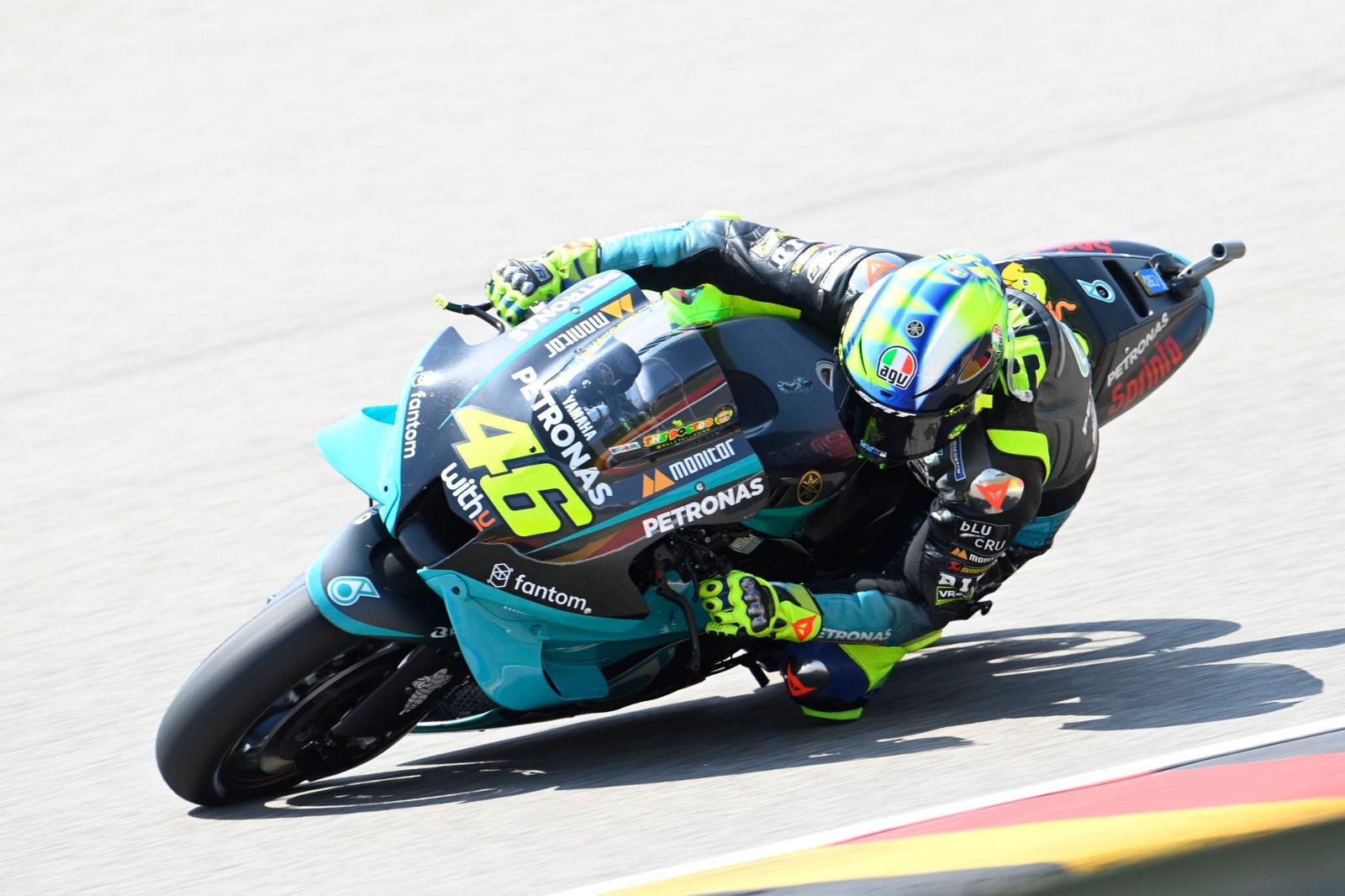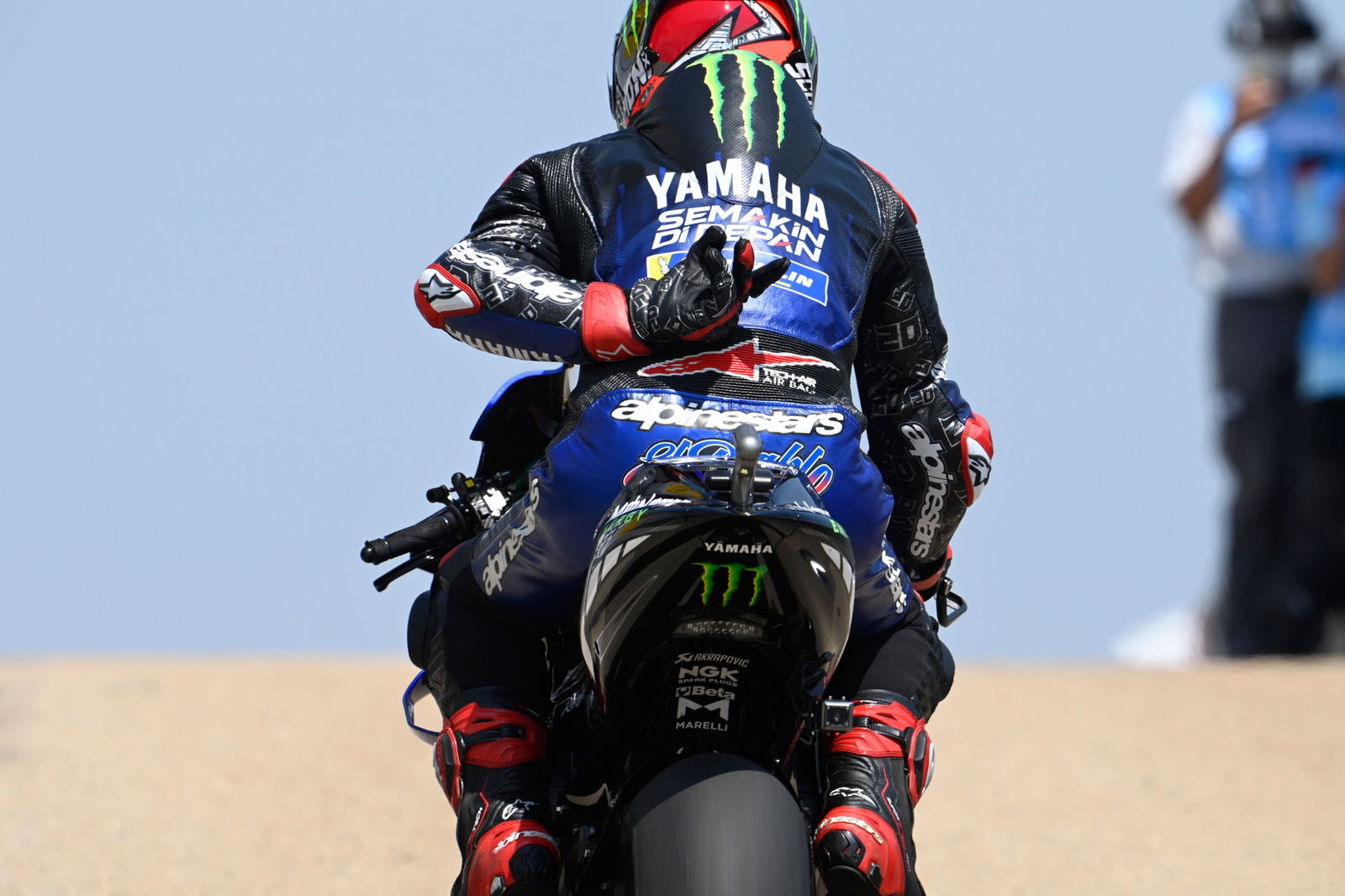Ride-height devices 'not safe'? 'That sounds like Honda trying to get it banned'

Could the new generation of MotoGP ride-height devices be causing stability issues under braking?
Pol Espargaro, one of those to fall at Turn 1 during Saturday at the German Grand Prix, felt it is 'making the bike more unstable, which is not safe'.
Initially introduced to lower the rear of a bike only at the start of a race, thus resisting wheelies and aiding acceleration, the MotoGP ride-height devices are now deployed whenever a rider accelerates onto a long straight.
The systems are automatically deactivated when the rider hits the brakes for the following turn, allowing the rear of the bike to rise back up to its normal position.
It is this upward movement of the rear that Espargaro believes is causing problems with Iker Lecuona (KTM), Takaaki Nakagami (Honda), Alex Marquez (Honda), Enea Bastianini (Ducati) and Maverick Vinales (Yamaha) also among this weekend's Turn 1 fallers.
"I think one of the reasons is for sure the [ride-height] device, the rear device," explained Repsol Honda rider Espargaro. "We use it during the lap, which means it goes down on the last corner and it needs to come up in the first corner.
"In Ducati I have no idea, in the other ones, it should deactivate mechanically when you put [braking] pressure on the front," he added, perhaps hinting at a different deactivation method on the Desmosedicis.
"As soon as the front forks are going down, the rear is coming up with the same force. So the position of the rear is instead of being attached to the ground, it is just coming up. Sure, this is not helping for the rear.
"In our case, for sure it's making the bike more unstable, which is not safe."
The Spaniard, who has fallen three times this weekend but still went on to qualify in eighth place, added that the front wings are also 'making us go more on the limit'.
"And then for sure the bike has more downforce every time. That means more power on the straight, which means more speed at the end of the straight, and you can brake later, the front tyre is more under stress because the downforce in the front is huge, and for sure more crashes, more mistakes," he said.
"The technology is making us faster, but also in my opinion it's making us go more on the limit."
Espargaro's team-mate Marc Marquez has made his opposition to ride-height devices clear for some time, primarily due to the ever-increasing MotoGP top speeds.
But the eight-time world champion also suggested ride-height devices could cause stability issues earlier this month in Italy: "The most tricky point is the uphill and downhill and with all these holeshot systems for the straight here in Mugello – I don’t know about the other bikes – but with our bike I will not use, because I don’t feel safe."
Jack Miller, whose Ducati team pioneered the current generation of wings and ride-height systems, was suspicious of the complaints.
"Pol and Taka have been down [at Turn 1 today] so quite clearly the Honda device is no good. Our one seems to work pretty good. Have I had a crash because of the holeshot device? No," said the Australian.
"That sounds like Honda moaning about something again, trying to get it banned so they don’t have to develop it.
"No issues for me, in fact it seems to work better because as I come over the hill I have more weight on the rear and I can brake harder and keep the rear on the ground."
KTM's Miguel Oliveira pointed to the use of asymmetric front tyres as having a bigger impact on braking mistakes than wings and ride height devices.
"I think it is because of the hard front tyre. As you know the tyres here have dual compounds, softer on the right side. When it come to the hard then it amplifies the difference between the hard and soft sides.
"It is true that the feeling is never great and for this reason I feel that many guys struggle to stop the bike. Our braking point is just over the crest so if we attack the brakes too much on the first moment we will not be able to stop so good.
"I cannot speak for the others but I have all the time been saving a few metres there to go wide. It has worked out for me."
All factories except Suzuki now have a rear ride-height device.


